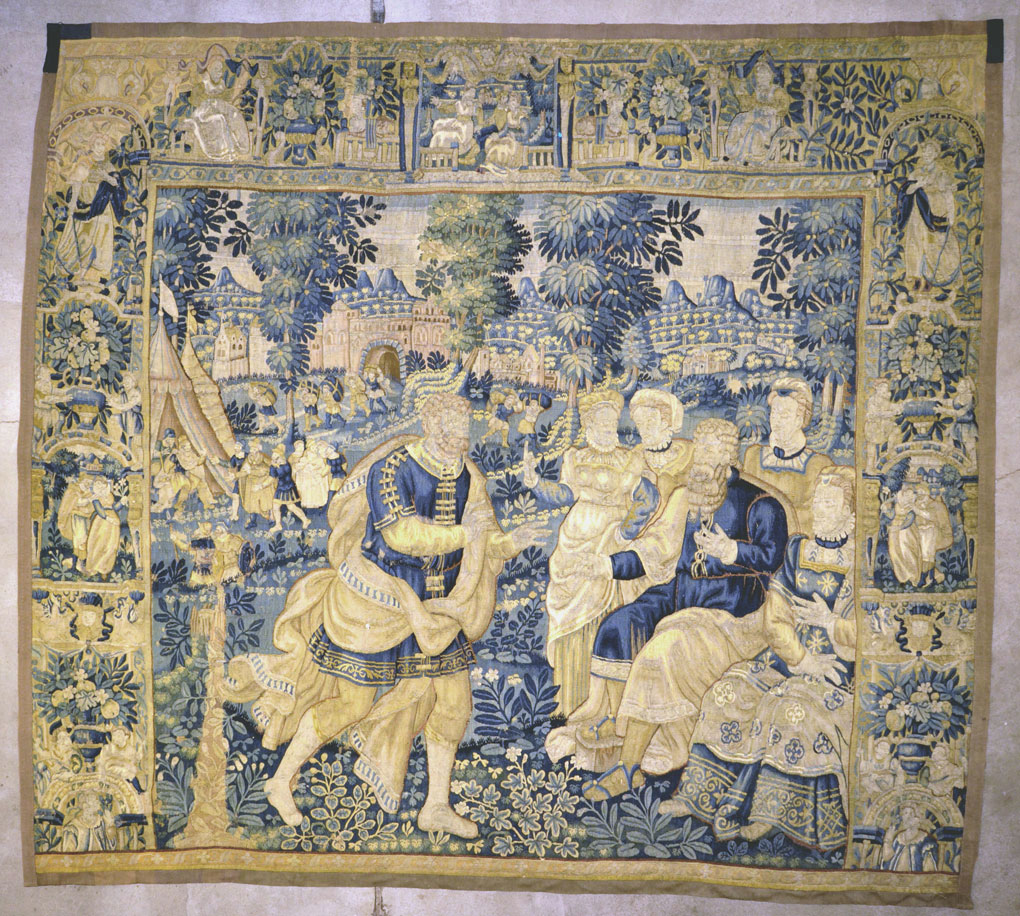

Antique Brussel Tapestry- 9’x10′ [1550’s woven silk]
Brussel tapestry of the 15th century rivaled Arras and Tournai. As exemplified by the altarpiece Brussel tapestry, it was noticed for its outstanding reproductions of religious painting by late Gothic Flemish masters. Where they were employed either as an altar cloth or antependium and also placed on walls behind the altar, such pieces were designed for churches or private chapels. Used to obtain the greatest possible naturalistic detailed painting, Brussel altarpieces often included silk
Brussels Tapestrys continued to dominate large-scale, high-quality production throughout the first two-thirds of the sixteenth century, and other Netherlandish centers continued to export large quantities of lower grade tapestries all over Europe, a number of smaller enterprises were set up elsewhere in Europe. Documentation indicates that there was a considerable amount of independent weaving in France during the sixteenth century.
From a commercial point of view, the most successful French workshops were those in Paris, which managed to maintain an independent existence throughout the first three-quarters of the century, supplying Brussel tapestries to the French crown and nobility.
Brussels tapestry workshops produced tapestry from at least the 15th century, but the city’s early production in the Late Gothic International style was eclipsed by the more prominent tapestry-weaving workshops based in Arras and Tournai. In 1477 Brussels, capital of the duchy of Brabant, was inherited by the house of Habsburg;[1] and in the same year Arras, the prominent center of tapestry-weaving in the Low Countries, was sacked and its tapestry manufacture never recovered, and Tournai and Brussels seem to have increased in importance.
The only millefleur tapestry to survive together with a record of its payment was a large heraldic millefleur carpet of very high quality made for Duke Charles the Bold of Burgundy in Brussels, of which part is now in the Bern Historical Museum.[2] Sophie Schneebalg-Perelman’s attribution[3] to Brussels of The Lady and the Unicorn at the Musée de Cluny may well be correct.[4]
